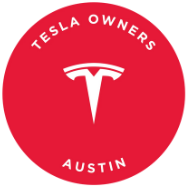Tesla’s highly anticipated Full Self-Driving (Supervised) update, version 14, has been delayed to Monday, October 6th. CEO Elon Musk took to social media to explain that a last-minute bug had surfaced with the latest build, necessitating the postponement to allow Tesla engineers more time to add additional features before the official rollout.
Previously, Musk had hinted that FSD v14 would be released sometime during the current week. This update is said to be powered by a model with ten times more parameters than the current version, promising a significant improvement in performance and additional refinements.
One of the key improvements expected with FSD 14 is a decrease in driver attention reminders, allowing for a smoother user experience once Tesla confirms the system’s safety in real-world driving scenarios.
Tesla’s Full Self-Driving technology has been rapidly evolving, with recent tests showcasing its superiority over Chinese ADAS competitors in crash avoidance scenarios. Musk has high hopes for version 14, describing it as the second most significant update to FSD after version 12 and likening it to feeling “sentient” compared to earlier iterations. He has even suggested that FSD 14 could outperform human drivers by 2-3 times in terms of safety and performance.
The ultimate goal for Tesla’s FSD technology is achieving fully autonomous driving at scale, with Musk highlighting it as one of the company’s most crucial innovations. The true test of whether version 14 lives up to these lofty expectations will come when it begins rolling out to customers next week.
As we eagerly await the release of FSD v14, what improvements are you hoping to see with this latest update? Share your thoughts in the comments below.
In other Tesla-related news, the Insurance Institute for Highway Safety (IIHS) recently compared the crash test performance of the Tesla Cybertruck and the Ford F-150 Lightning, with the Cybertruck emerging as the superior vehicle. Additionally, Elon Musk unveiled a video showcasing Tesla’s humanoid robot Optimus learning Kung Fu moves and demonstrating improved mobility. Lastly, Tesla has expanded the availability of its Cybertruck to the Middle East, with customers in Saudi Arabia, Qatar, and the UAE now able to place orders for the electric pickup truck. The year 2021 has been a rollercoaster ride for the global economy, with the ongoing impact of the COVID-19 pandemic causing disruptions across various industries. As we near the end of the year, it is evident that the recovery process has been uneven, with some sectors experiencing rapid growth while others continue to struggle.
One of the industries that has seen significant growth in 2021 is the technology sector. With the shift towards remote work and digital transformation accelerated by the pandemic, tech companies have thrived in this new environment. Companies like Apple, Amazon, and Microsoft have reported record-breaking profits, driven by increased demand for their products and services.
The e-commerce sector has also seen a boom in 2021, as consumers have shifted towards online shopping in response to lockdowns and social distancing measures. Companies like Amazon and Alibaba have seen a surge in sales, as people turn to online platforms for their shopping needs. This trend is likely to continue into 2022, as more consumers embrace the convenience of online shopping.
On the other hand, industries like travel and hospitality have been hit hard by the pandemic, with many businesses struggling to stay afloat. The aviation industry, in particular, has faced significant challenges, with airlines operating at reduced capacity and facing travel restrictions. The hospitality sector has also been impacted, as hotels and restaurants have had to adapt to changing regulations and consumer behavior.
The automotive industry has also faced challenges in 2021, with supply chain disruptions and chip shortages affecting production and sales. Car manufacturers have had to adjust their production schedules and prioritize certain models over others, leading to delays and shortages in the market. Despite these challenges, the electric vehicle market has seen growth, as consumers become more conscious of their carbon footprint and look for sustainable alternatives to traditional vehicles.
Looking ahead to 2022, it is clear that the global economy will continue to face uncertainty as the world navigates the ongoing impact of the pandemic. The recovery process will likely be slow and uneven, with some industries rebounding quickly while others struggle to recover. As businesses adapt to the new normal and consumer behavior continues to evolve, it will be crucial for companies to be agile and innovative in order to survive and thrive in the post-pandemic world.

